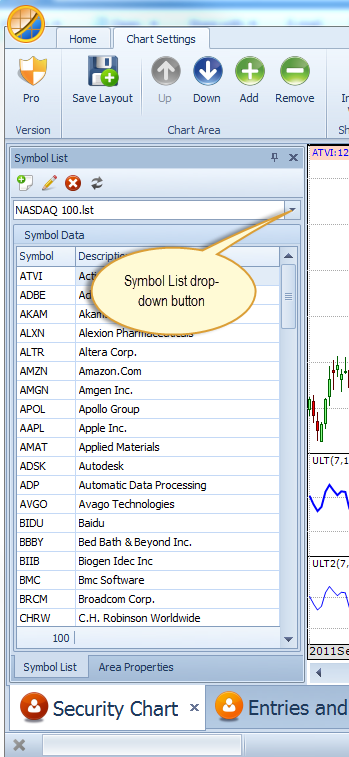
A symbol list defines a set of data to work with. It contains the actual symbol that is used to fetch data from the associated data provider and a description of that symbol. For instance:
AMZN,Amazon.Com
The symbol and description information is stored in a text file on your hard drive in the {Documents}\EdgeRater\Symbol Lists directory. The text file has one symbol and description per line. Here’s an example of the contents of the text file:
ATVI,Activision Blizzard Inc
ADBE,Adobe Systems Incorporated
AKAM,Akamai Technologies
ALXN,Alexion Pharmaceuticals
ALTR,Altera Corp.
AMZN,Amazon.Com
AMGN,Amgen Inc.
APOL,Apollo Group
AAPL,Apple Inc.
Example contents of a symbol lists text file
When a symbol list is added to the symbol lists folder it will appear in the dropdown control in several places in the EdgeRater application interface, for instance in the Security Chart tab:

Symbol lists in the symbol lists folder can be selected using the drop-down button
When a symbol list is selected, the securities contained in that file will be displayed in the ‘Symbol Data’ section of the Security Chart dialog. However, if data has not been fetched the symbol data pane will remain empty until the first time data is updated.
By default a newly created symbol list will use the ‘Default data provider’ (the data provider that has the check mark next to it):
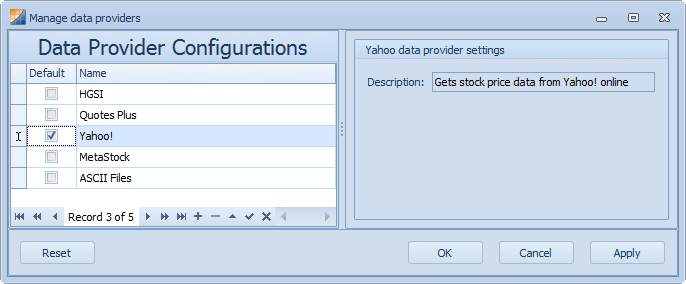
The Default Data Provider
Also by default, 2 years’ worth of data will be fetched for each symbol in the list. However it is possible to change these settings on a list by list basis by clicking on the ‘Edit List’ button to access the symbol list edit dialog:
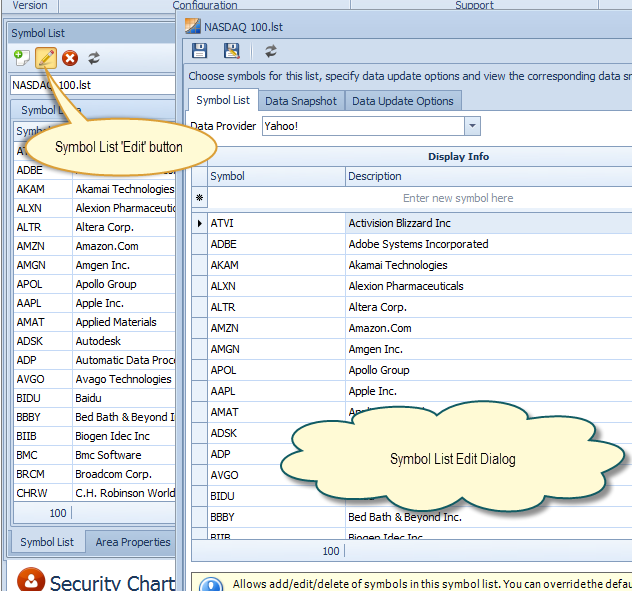
The Symbol List Edit button displays the Symbol List Edit Dialog
The 3 tabs in this dialog allow full control over data access for the list:
Symbol List Tab
The Symbol List tab displays all symbols and descriptions that are contained within the symbol list text file. You can add symbols and descriptions via this tab (or you can directly add symbols and descriptions to the text file). This tab also allows you to change the data provider for the list (for cases where you don’t want the default data provider).
Data Snapshot Tab
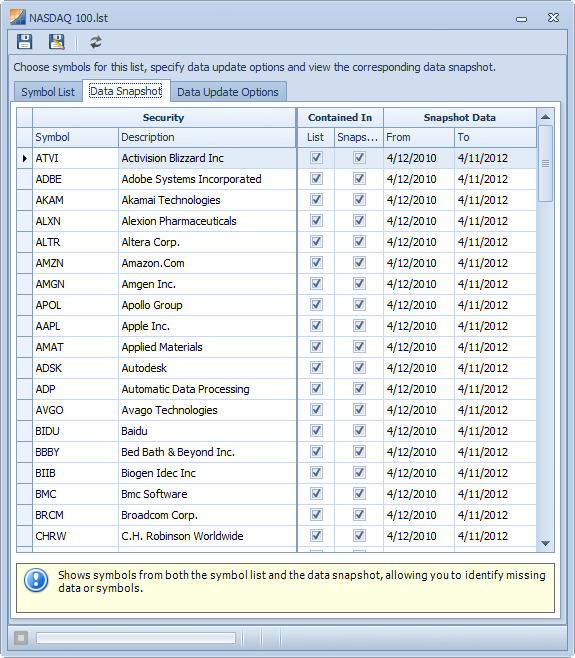
The Data Snapshot Tab
The data snapshot tab allows you to see what symbols are contained within the symbol list and how much data has been fetched and is currently associated with each symbol. The ‘Contained In’ columns allow you to easily see if you have data in the list but not the associated snapshot and vice versa.
Data Update Options
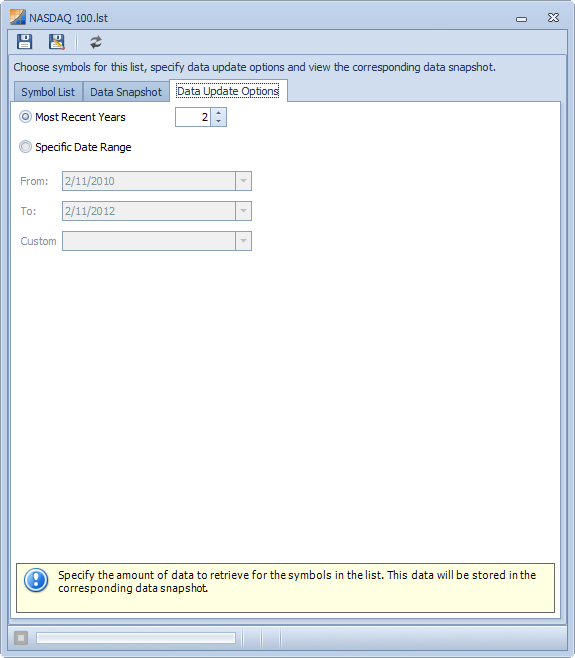
The Data Update Options tab
The data update options tab allows you to specify how much data to attempt to retrieve for the list. If you specify ‘Most Recent Years’ the number to the right will be used to determine how many years of recent data to fetch. This setting should be used if you want the list to update each day with current data.
If you specify ‘Specific Date Range’ and select a ‘From’ and ‘To’ date then data will be fetched for that specific range. This setting is useful to analyze trading strategies over different time periods. Note that when using this setting the list data will not be updated to the latest data each day.